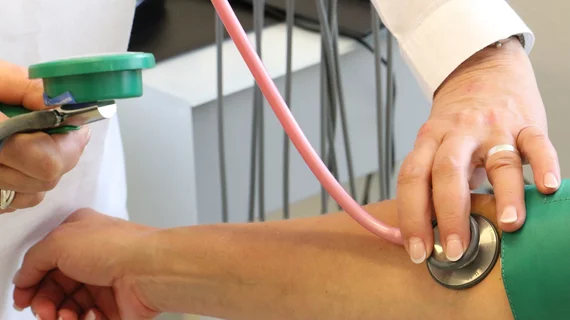Chest X-rays, bloodwork all algorithm needs to predict COVID severity in incoming patients
A new deep learning algorithm quickly and accurately forecasts outcomes of COVID-positive patients in the ER using routine workup information.
The AI was developed by Fred Kwon, PhD, and colleagues at Icahn School of Medicine at Mount Sinai. RSNA’s Radiology: Artificial Intelligence published their study report online Dec. 16.
To train the algorithm, the team drew data from 338 adult patients who presented last spring at a Mount Sinai Health System ER in any of three New York City boroughs.
The initial data included nothing more than blood pressure readings, chest X-rays and basic bloodwork, and no two ERs had the same X-ray equipment.
Upon testing the technique, the researchers found their model accurately predicted 30-day admission status, intubation status and survival.
The algorithm’s reliability held even though there were differences in age and outcomes in the test set vs. those in the training and validation sets.
Kwon and colleagues simultaneously trained and tested separate radiograph-only and bloodwork-only models.
They found the combined model performed best.
“As expected, the model performed better for the young adults aged 21 to 50 years but still demonstrated clinically useful results for the older patients aged greater than 50 years in the test set,” the authors report.
They name as an advantage of their study design its focus on developing and evaluating deep learning’s ability to predict clinical outcomes in the ER. Other studies have tended to concentrate on screening for or confirming a COVID diagnosis, they note.
They list as a limitation their lack of data from patients without real-time reverse transcription polymerase chain reaction (RT-PCR) assays. For this reason, they state, the model is not appropriate for predicting disease course when diagnostic testing is not immediately available.
“While surveys of emergency department physicians do not typically report chest X-ray findings as a major factor in the decision-making process to admit a patient with community acquired pneumonia, this algorithm can reliably predict 30-day admission status in COVID-19 patients and may serve as a first-pass triaging process to alert radiologists and clinicians of higher-risk patients who will likely require hospitalization,” Kwon and co-authors write.
Such prioritization of care, they add, “can be readily adopted within existing clinical workflows and lead to validation in actual clinical practice, thereby addressing the common challenges and criticisms of existing artificial intelligence research in medicine.”
Additionally, Kwon and colleagues point out that many promising AI algorithms perform well in research settings but fail to become integrated into clinical workflows. They suggest their participation in the COVID informatics center at their institution will help the institution not only deploy the new AI in clinical practice but also integrate it with all available data sources, including the EHR.
The study is available in full for free (click PDF).

